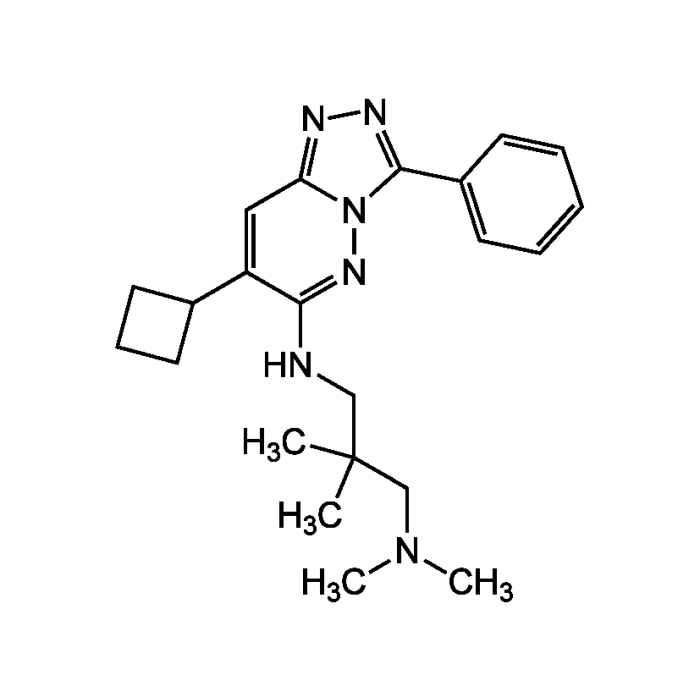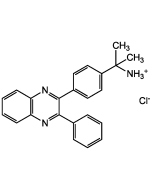Cookie Policy: This site uses cookies to improve your experience. You can find out more about our use of cookies in our Privacy Policy. By continuing to browse this site you agree to our use of cookies.
SynKinase
Akt-I-1
As low as
CHF 0.00
In stock
Only %1 left
SYN-1005-M0011 mgCHF 277.00
SYN-1005-M0055 mgCHF 546.00
SYN-1005-M01010 mgCHF 858.00
SYN-1005-M05050 mgINQ
SYN-1005-M100100 mgINQ

| Product Details | |
|---|---|
| Synonyms | AktI1 |
| Product Type | Chemical |
| Properties | |
| Formula | C22H30N6 |
| MW | 378.5 |
| CAS | 473382-39-7 |
| Purity Chemicals | ≥95% |
| Appearance | Solid. |
| Solubility | Soluble in DMSO. |
| Declaration | Manufactured by SynKinase. |
| Other Product Data |
Target: AKT | Kinase Group: AGC | Substrate: Serine-Threonine Click here for Original Manufacturer Product Datasheet Our product description may differ slightly from the original manufacturers product datasheet. |
| InChi Key | FKCXKEHHZXEWGP-UHFFFAOYSA-N |
| Shipping and Handling | |
| Shipping | AMBIENT |
| Short Term Storage | +4°C |
| Long Term Storage | -20°C |
| Use/Stability | Stable for at least 2 years after receipt when stored at -20°C. |
| Documents | |
| MSDS |
 Download PDF Download PDF |
| Product Specification Sheet | |
| Datasheet |
 Download PDF Download PDF |
Description
The compound (Akt-I-1) inhibits only Akt1 (IC(50) 4.6 µM) and does not inhibit AKT2, or AKT3. The compound is a reversible inhibitor, and exhibits a linear mixed-type inhibition against ATP and peptide substrate. In addition to inhibiting kinase activity of AKT1 isoform, AKT-I-1 blocked the phosphorylation and activation of AKT1 by PDK1 (phosphoinositide-dependent kinase 1). The inhibitor was found to be cell-active and to block phosphorylation of Akt at Thr308 and Ser473, reduce the levels of active Akt in cells, block the phosphorylation of known Akt substrates and promote TRAIL (tumour-necrosis-factor-related apoptosis-inducing ligand)-induced apoptosis in LNCap prostate cancer cells.
Product References
- Identification and characterization of pleckstrin-homology-domain-dependent and isoenzyme-specific Akt inhibitors: S.F. Barnett, et al.; Biochem. J. 385, 399 (2005)






